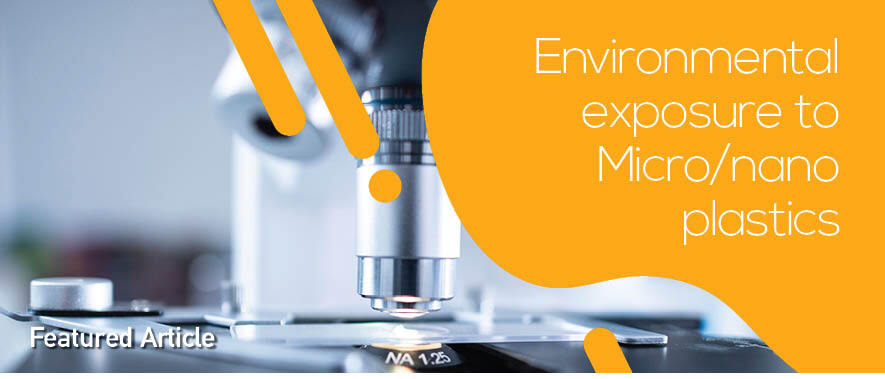Over the last few years, the widespread use of plastics has led to the extensive presence of micro/nano plastics (MNPs) in the environment, along with their ability to enter into the food chain, posing a significant challenge to the environment and human health1,2. Due to their persistence, MNPs are ubiquitously distributed and primarily reach humans through dietary intake3. Human exposure to MNPs may occur through inhalation, ingestion, or dermal contact4. In addition, the fragmentation of plastics of daily use contributes significantly to this exposure5.
Human biological monitoring (HBM) studies are crucial for assessing exposure to environmental pollutants, helping to identify sources and inform health policy. The European Human Biomonitoring Initiative (HBM4EU), active from 2017 to 2022, aimed to harmonize European biomonitoring, focusing on vulnerable groups such as children to reduce chemical exposure. Nevertheless, since then, very few studies have examined MNPs in human health, with most of the research limited to animal models, some suggesting associations with alterations in the immune system, lungs, and microbiota, and to a less extent, neurotoxicity, liver, and spleen impacts6. Regardless, one of the most extensively studied effects is the association between MNP exposure and impaired fertility, particularly in males, as well as ovarian dysfunction and developmental abnormalities2. Several in vitro and in vivo studies have demonstrated that MNPs can significantly impact human health by disrupting biological processes. These studies indicate that MNPs can induce harmful effects, including the activation of inflammatory responses and the generation of oxidative stress, which may lead to various adverse health outcomes7. However, the full extent of the potential effects on various organ systems remains poorly understood, and knowledge of their cumulative effects over time is limited8, with many studies neglecting long-term exposure assessments5. Furthermore, the absence of robust and standardized protocols for quantifying MNPs significantly weakens the reliability of existing data4.
Strengthening regulatory frameworks is essential to mitigate the risks MNPs pose. While the European Union has implemented new legislation addressing these concerns9, prioritizing biomonitoring in human populations is crucial. It includes evaluating internal MNP exposures, individual susceptibility factors, and organ-specific biomarkers. Establishing clear cause-effect relationships between MNP exposure and health outcomes requires comprehensive biomonitoring that combines exposure assessment with in-depth biomarker analysis at the organ level. Such efforts are critical for evidence-based policymaking and targeted public health interventions to address this emerging environmental threat effectively10.
In conclusion, the mounting presence of microplastics and nanoplastics in our environment presents a significant risk to the ecosystem and, by extension, to human health. Despite the progress achieved through initiatives such as HBM4EU, there remains an urgent need for further research on exposure to MNPs, especially in relation to their potentially severe long-term effects and their implications for the health of the most vulnerable populations. To effectively address this emerging threat, it is critical to strengthen regulatory frameworks, optimize biosurveillance efforts, and develop standardized protocols for quantifying exposure to MNPs. By prioritizing these actions, we can better understand the risks posed by MNPs and implement evidence-based policies that safeguard both public health and the environment.


